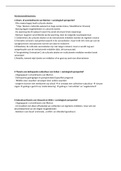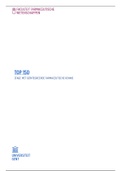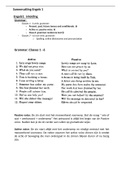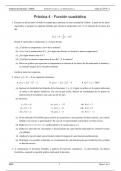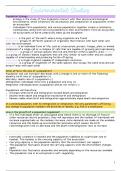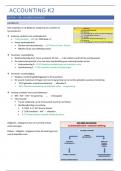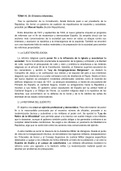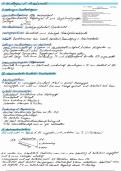1
There is a clear relationship between economic productivity and violence displayed by Edward E.
Baptist. Because of using violence against enslaved people, more cotton was produced, and more
economic productivity was achieved. Certain assumptions of modernity are also referred to by
Baptist. This relationship between economic productivity and violence is clear through the
understanding of hands and whipping machines, how the machines were used, what systems of
labour were used, what left and right-handed power is and how they interact. It is also important to
understand why Baptist explains the history of cotton through Charles Ball and how we are all part
of Charles Ball’s story.
Understanding what hand and whipping machines are vital. The whipping machine was also used to
extract a kind of truth from those enslaved. The pushing system of labour control was used. Slaves
were tortured to motivate them to work harder. People were punished for not meeting their daily
goals. Cotton picking became more efficient with the use of whipping machines. 1 Cotton
productivity increased as pickers became able to pick more quickly and efficiently. Torture was a
tool used to accomplish goals.2 The whipping machine improved the efficiency and precision of
cotton harvesting and cultivation. Leather straps with holes were tied to the wheel, and the slave was
tied to the machine. While the machine was operating, the straps struck the slave's back. The
machine challenged slaves to surpass yesterday's levels of production and profit. 3 When operating a
hand machine, people favour using one hand over the other. Yet, enslaved people had to learn how to
use every hand equally.4 Whipping machines use left-hand power against individuals to force more
labour.5 Taking the time to untangle one's hands from the old associations tied to one part of the
brain or another was incredibly difficult. It left a mark on the body, but even more deeply on the
mind.6 Enslaved people were forced to expose their left hands by their masters. Whipping was a
method used by enslavers to force slaves to reveal their hidden capacities or abilities. 7 The whipping
machine revealed the truth about how much cotton an enslaved individual could pick.8
1
Beckert, Sven, Seth Rockman, and Edward E. Baptist. 2016. Slavery's Capitalism: A New History of American Economic
Development. University of Pennsylvania Press. Pg. 52
2
Ibid., 56
3
Ibid., 57
4
Ibid., 59
5
Ibid., 60
6
Ibid., 61
7
Ibid., 51
8
Ibid., 58
, 2
The white overseers used various systems of labour in the cotton fields. White overseers began their
domination of the cotton industry by using political, military, and financial power. They took land
from the Indians, developed a set of new slave trades to transport captives, and then forced captives
to work. The overseers would portion the labourers into dozens, each under a leader. 9 Charles Ball
learnt about the system of labour extraction designed by white people whom the enslaved identified
as “pushing men.” Pushing men deployed innovative techniques of labour control to fill new fields
with greater quantities of cotton. 10 It was widespread practice to force fast workers to work at top
speed, setting the pace for everyone else to follow. This technique allowed the overseer to monitor
workers. Enslavers used whatever violence they saw as necessary, including separation from
community and family.11 The system that pushing men used to increase the number of cotton plants
that enslaved people planted and cultivated was a direct application of right-handed power as a
technique for organising and controlling human behaviour.12 A system of measurement, accounting,
and torture was used to coerce enslaved people to pick more cotton. 13 U.S. slavery produced rapid
and continuous productivity growth.14
We must next explain what right-handed and left-handed power is. It is also important to understand
how they interact with each other. When right-handed power is exercised, an outcome is forced
directly. Dominance characterizes right-handed power. Left-handed power refers to the strength of
the poor. Imagination, argument, and criticism were the grounds for independent thought by left
hand power.15 In 1805, right-hand power changed. The early 19th century saw societies and
individuals gaining right-handed power. As societies with more right-handed power dominated their
counterparts, the distribution of right-handed power became unequal. 16 The modern world is
characterized by the confrontation, abuse, distortion, and transformation of left-handed power. 17
When right-handed power is used, it dominates left-handed power. There is a power struggle
between the interaction of the two powers.
9
Beckert, Sven, Seth Rockman, and Edward E. Baptist. 2016. Slavery's Capitalism: A New History of American Economic
Development. University of Pennsylvania Press. Pg. 33.
10
Ibid., 33
11
Ibid., 35
12
Ibid., 40
13
Ibid., 48
14
Clegg, John J. "Capitalism and slavery." Critical Historical Studies 2, no. 2 (2015): 282.
15
Beckert, Sven, Seth Rockman, and Edward E. Baptist. 2016. Slavery's Capitalism: A New History of American Economic
Development. University of Pennsylvania Press. Pg. 38
16
Ibid., 39
17
Ibid., 60
There is a clear relationship between economic productivity and violence displayed by Edward E.
Baptist. Because of using violence against enslaved people, more cotton was produced, and more
economic productivity was achieved. Certain assumptions of modernity are also referred to by
Baptist. This relationship between economic productivity and violence is clear through the
understanding of hands and whipping machines, how the machines were used, what systems of
labour were used, what left and right-handed power is and how they interact. It is also important to
understand why Baptist explains the history of cotton through Charles Ball and how we are all part
of Charles Ball’s story.
Understanding what hand and whipping machines are vital. The whipping machine was also used to
extract a kind of truth from those enslaved. The pushing system of labour control was used. Slaves
were tortured to motivate them to work harder. People were punished for not meeting their daily
goals. Cotton picking became more efficient with the use of whipping machines. 1 Cotton
productivity increased as pickers became able to pick more quickly and efficiently. Torture was a
tool used to accomplish goals.2 The whipping machine improved the efficiency and precision of
cotton harvesting and cultivation. Leather straps with holes were tied to the wheel, and the slave was
tied to the machine. While the machine was operating, the straps struck the slave's back. The
machine challenged slaves to surpass yesterday's levels of production and profit. 3 When operating a
hand machine, people favour using one hand over the other. Yet, enslaved people had to learn how to
use every hand equally.4 Whipping machines use left-hand power against individuals to force more
labour.5 Taking the time to untangle one's hands from the old associations tied to one part of the
brain or another was incredibly difficult. It left a mark on the body, but even more deeply on the
mind.6 Enslaved people were forced to expose their left hands by their masters. Whipping was a
method used by enslavers to force slaves to reveal their hidden capacities or abilities. 7 The whipping
machine revealed the truth about how much cotton an enslaved individual could pick.8
1
Beckert, Sven, Seth Rockman, and Edward E. Baptist. 2016. Slavery's Capitalism: A New History of American Economic
Development. University of Pennsylvania Press. Pg. 52
2
Ibid., 56
3
Ibid., 57
4
Ibid., 59
5
Ibid., 60
6
Ibid., 61
7
Ibid., 51
8
Ibid., 58
, 2
The white overseers used various systems of labour in the cotton fields. White overseers began their
domination of the cotton industry by using political, military, and financial power. They took land
from the Indians, developed a set of new slave trades to transport captives, and then forced captives
to work. The overseers would portion the labourers into dozens, each under a leader. 9 Charles Ball
learnt about the system of labour extraction designed by white people whom the enslaved identified
as “pushing men.” Pushing men deployed innovative techniques of labour control to fill new fields
with greater quantities of cotton. 10 It was widespread practice to force fast workers to work at top
speed, setting the pace for everyone else to follow. This technique allowed the overseer to monitor
workers. Enslavers used whatever violence they saw as necessary, including separation from
community and family.11 The system that pushing men used to increase the number of cotton plants
that enslaved people planted and cultivated was a direct application of right-handed power as a
technique for organising and controlling human behaviour.12 A system of measurement, accounting,
and torture was used to coerce enslaved people to pick more cotton. 13 U.S. slavery produced rapid
and continuous productivity growth.14
We must next explain what right-handed and left-handed power is. It is also important to understand
how they interact with each other. When right-handed power is exercised, an outcome is forced
directly. Dominance characterizes right-handed power. Left-handed power refers to the strength of
the poor. Imagination, argument, and criticism were the grounds for independent thought by left
hand power.15 In 1805, right-hand power changed. The early 19th century saw societies and
individuals gaining right-handed power. As societies with more right-handed power dominated their
counterparts, the distribution of right-handed power became unequal. 16 The modern world is
characterized by the confrontation, abuse, distortion, and transformation of left-handed power. 17
When right-handed power is used, it dominates left-handed power. There is a power struggle
between the interaction of the two powers.
9
Beckert, Sven, Seth Rockman, and Edward E. Baptist. 2016. Slavery's Capitalism: A New History of American Economic
Development. University of Pennsylvania Press. Pg. 33.
10
Ibid., 33
11
Ibid., 35
12
Ibid., 40
13
Ibid., 48
14
Clegg, John J. "Capitalism and slavery." Critical Historical Studies 2, no. 2 (2015): 282.
15
Beckert, Sven, Seth Rockman, and Edward E. Baptist. 2016. Slavery's Capitalism: A New History of American Economic
Development. University of Pennsylvania Press. Pg. 38
16
Ibid., 39
17
Ibid., 60

